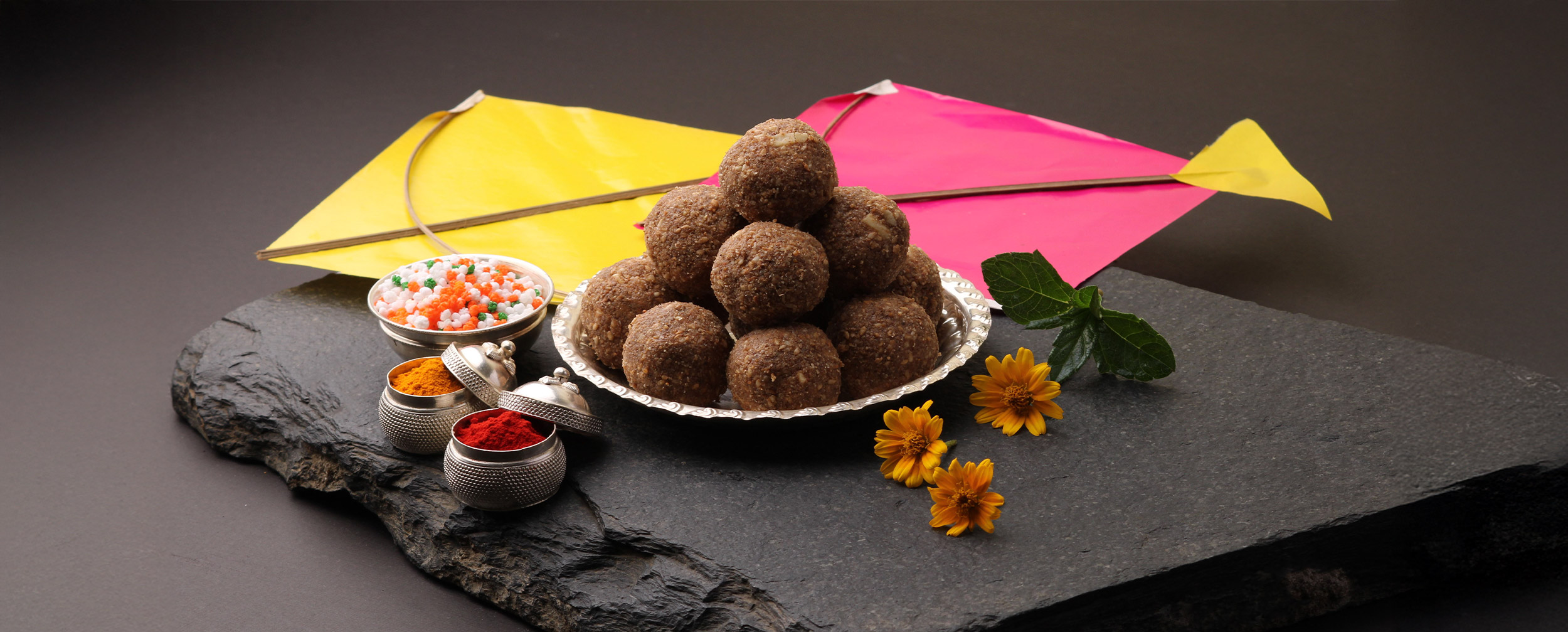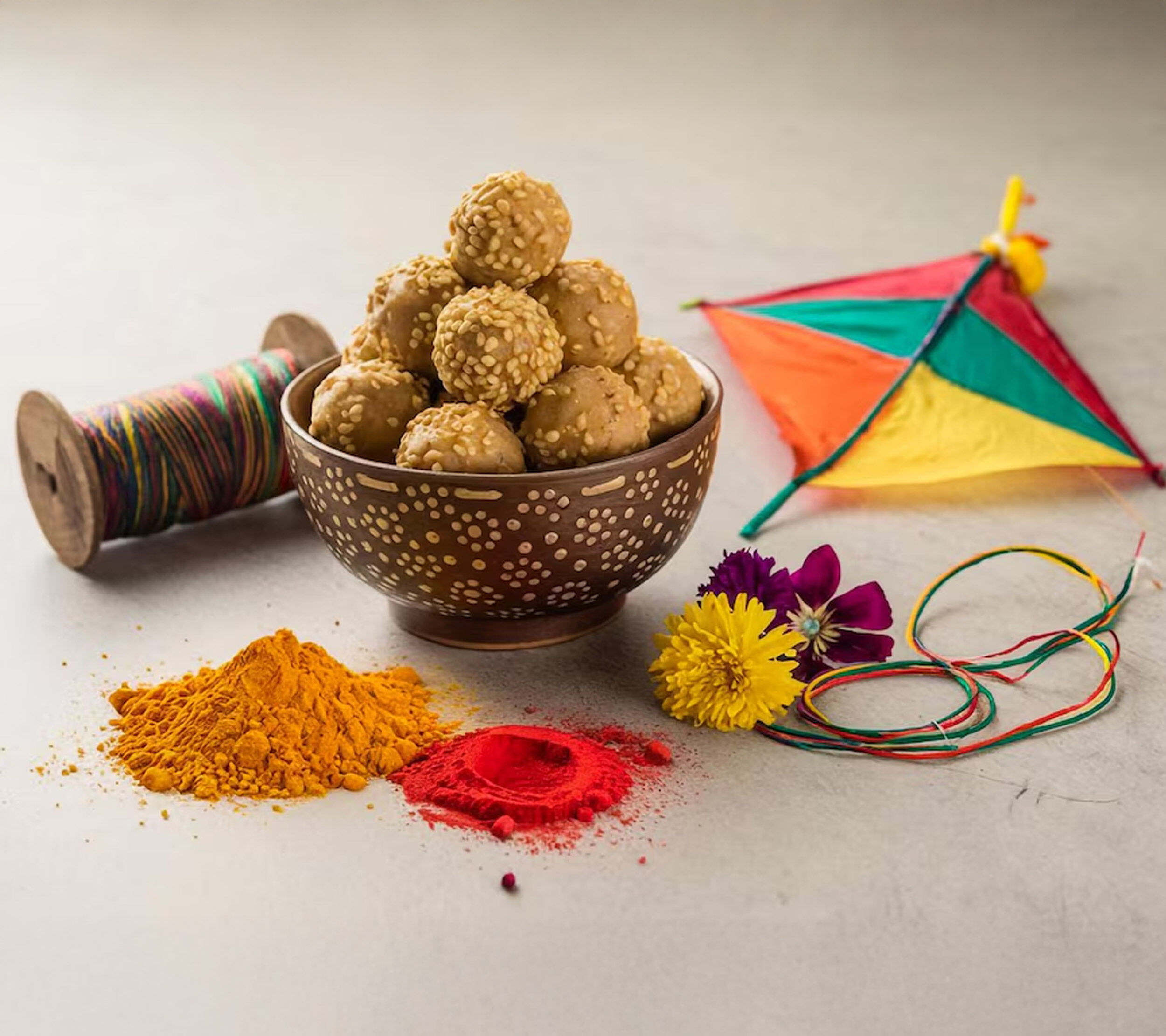STORIES BY DIWAS

Lifestyle
How Makar Sankranti Colours Paint India's Cultural Canvas
Date 10 January 2025 Reading time: 7-10 mins
Makar Sankranti, the harvest festival that marks the sun's transit into Capricorn, is a joyous celebration of new beginnings, abundance, and the victory of light over darkness. But did you know that the Makar Sankranti colours associated with this festival vary dramatically as you travel across India's diverse regions? Each region brings its own unique hues, reflecting local traditions, cultural significance, and the spirit of the harvest season.
From the sunshine yellows of Punjab's mustard fields to the earthy tones of Assam's meji bonfires, the colours of Makar Sankranti are as varied as the local traditions surrounding this pan-Indian festival. So let's embark on a colourful journey and explore how the celebration of Makar Sankranti paints each region in its own unique palette!
Understanding the Celebration of Makar Sankranti
Makar Sankranti is one of the few Indian festivals that follows the solar calendar, always falling on January 14th. It marks the end of winter and the arrival of longer, warmer days. This auspicious day signifies the sun’s transition into Capricorn, bringing an end to darkness and ushering in light.
Across India, Makar Sankranti is celebrated with immense joy and enthusiasm. People enjoy kite flying, exchange delicious sweets like tilgul, and perform regional rituals unique to their cultures. Dressed in vibrant, festive attire and surrounded by Makar Sankranti colours, communities come together to honour the new season, celebrate the harvest, and welcome brighter days ahead. The skies are filled with kites in an array of bright, symbolising the hope and joy that the festival brings.
The Role of Colours in Makar Sankranti
While the essence of Makar Sankranti colours remains constant across India, the colours associated with the festival vary from state to state. These colours are not just decorative—they are rich in symbolism, reflecting the agricultural bounty, cultural traditions, and seasonal shifts that define each region.
In Gujarat, for example, the sky is filled with bright kites in every shade imaginable, symbolising freedom, joy, and the warmth of the sun. In Tamil Nadu, intricate kolam patterns drawn at the entrance of homes are painted with vibrant colours, signifying prosperity and a welcoming spirit.
Whether it's the yellow of mustard fields in Punjab or the red and green of harvest crops in Karnataka, the Makar Sankranti colours create an atmosphere of vibrancy and cheer that lights up every home and street. These colours enhance the festive mood, filling the air with warmth, positivity, and the promise of new beginnings. These Makar Sankranti colours not only represent the agricultural richness but also the hope and optimism that the festival brings to all who celebrate it.
How Makar Sankranti Colours Vary from Region to Region
Let’s dive into the vibrant colours that define Makar Sankranti celebrations across regions:
North India: The Vibrant Hues of Makar Sankranti
In North Indian states like Punjab, Haryana, and Delhi, Sankranti celebrations are all about the warm, energetic hues of the winter harvest. The golden yellow of mustard fields and the bright orange of bonfires dominate the colour palette, symbolising the sun's warmth and vitality.
During Lohri celebrations in Punjab, people dress up in vibrant yellows, oranges, and reds, gathering around the bonfire to sing folk songs and exchange festive treats. The colours of the bonfire itself hold deep significance—the orange flames represent the sun's energy, while the red embers symbolise fertility and prosperity.
As you move towards Uttarakhand and Uttar Pradesh, yellow and red continue to dominate, often complemented by earthy greens in floral decorations and rangoli patterns. The bright colours not only add a festive touch but also symbolise the coming of spring and the promise of new beginnings during the Sankranti celebrations.
South India: The Traditional Colours of Sankranti Celebration
In contrast to the warm, fiery hues of the North, Makar Sankranti colours in South India tend to be more traditional and nature-inspired. In Tamil Nadu, where the festival is celebrated as Pongal, white, yellow, and green take centre stage, reflecting the harvest of rice, turmeric, and sugarcane.
The kolam patterns that adorn homes during Pongal are often created using white rice flour, symbolising purity and auspiciousness. Men and women dress in bright yellow, a colour associated with the warmth of the sun and the golden hue of freshly harvested paddy.
In neighbouring Andhra Pradesh and Telangana, Makar Sankranti colours include vibrant shades of red, yellow, and green. These colours appear in everything from the toranalu (floral door hangings) to the rangoli designs and the festive clothing worn by people of all ages.
East India: The Unique Palette of Makar Sankranti
As we journey towards East India, we encounter a Makar Sankranti palette that beautifully blends bright and earthy tones. In West Bengal, where the festival is celebrated as Poush Sankranti, the dominant colours are red, yellow, and green—red symbolising the joy and energy of the festivities, yellow embodying the warmth of the sun, and green representing the freshness of new crops.
In Assam, Magh Bihu colours are more subdued and nature-inspired, reflecting the state's lush green landscapes. The earthy tones of mejis (bonfires) and the natural hues of traditional pitha (rice cakes) and larus (sweets) take precedence over bright, artificial colours.
The Unity in Diversity of Makar Sankranti Colours
As we've seen, the colours of Makar Sankranti are as rich and diverse as the vibrant regional traditions that surround the festival. From the warm, lively hues that light up the skies of North India, to the traditional, earthy tones of the South, and from the bright, soaring kites in the West to the earthy, rustic shades in the East, each region brings its own unique splash of colour to this joyous harvest celebration.
Yet, amidst this spectacular kaleidoscope, there is an undeniable thread of unity that binds them all together. Regardless of region, the colours of Makar Sankranti symbolise a shared celebration of joy, prosperity, and new beginnings.
They represent the coming together of families and communities, the honouring of nature’s incredible bounty, and the timeless triumph of light over darkness. It’s a celebration that, no matter where you are in India, fills the air with warmth, hope, and the promise of brighter days ahead.
So this Makar Sankranti, let's embrace the vibrant hues of the festival and celebrate the unity in diversity that makes India so special. And if you're looking to add a touch of festive colour to your wardrobe, check out Diwas's stunning collection of chikankari kurtas, embroidered kurtas, solid kurtas and more—perfect for any Sankranti celebration!


